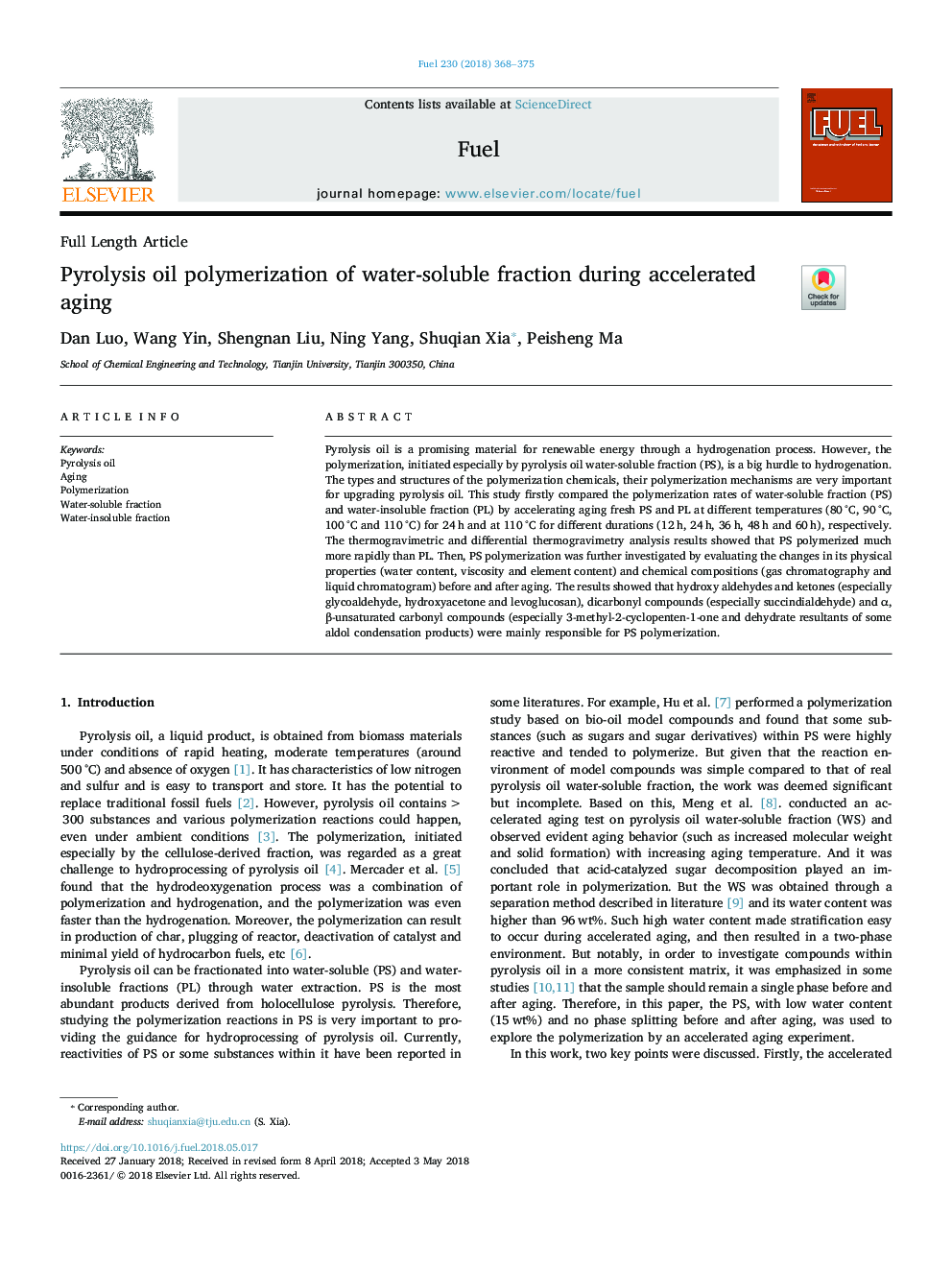| Article ID | Journal | Published Year | Pages | File Type |
|---|---|---|---|---|
| 6630646 | Fuel | 2018 | 8 Pages |
Abstract
Pyrolysis oil is a promising material for renewable energy through a hydrogenation process. However, the polymerization, initiated especially by pyrolysis oil water-soluble fraction (PS), is a big hurdle to hydrogenation. The types and structures of the polymerization chemicals, their polymerization mechanisms are very important for upgrading pyrolysis oil. This study firstly compared the polymerization rates of water-soluble fraction (PS) and water-insoluble fraction (PL) by accelerating aging fresh PS and PL at different temperatures (80â¯Â°C, 90â¯Â°C, 100â¯Â°C and 110â¯Â°C) for 24â¯h and at 110â¯Â°C for different durations (12â¯h, 24â¯h, 36â¯h, 48â¯h and 60â¯h), respectively. The thermogravimetric and differential thermogravimetry analysis results showed that PS polymerized much more rapidly than PL. Then, PS polymerization was further investigated by evaluating the changes in its physical properties (water content, viscosity and element content) and chemical compositions (gas chromatography and liquid chromatogram) before and after aging. The results showed that hydroxy aldehydes and ketones (especially glycoaldehyde, hydroxyacetone and levoglucosan), dicarbonyl compounds (especially succindialdehyde) and α, β-unsaturated carbonyl compounds (especially 3-methyl-2-cyclopenten-1-one and dehydrate resultants of some aldol condensation products) were mainly responsible for PS polymerization.
Related Topics
Physical Sciences and Engineering
Chemical Engineering
Chemical Engineering (General)
Authors
Dan Luo, Wang Yin, Shengnan Liu, Ning Yang, Shuqian Xia, Peisheng Ma,
